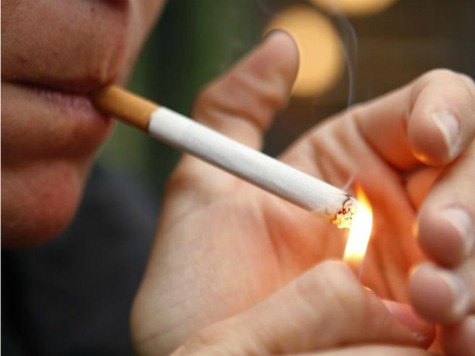I reported very recently on the World Health Organization’s (WHO) sixth Conference of the Parties (COP6) meeting. The meeting was heavily criticised, not only on the veil of secrecy that surrounded the meetings, where only certain people were admitted, but also the outcomes. Their recommendations include and I quote:
- Proposals for regulation of smokeless tobacco and water pipe products
- Recommendations for entry into force of the Protocol to Eliminate Illicit Trade in Tobacco Products
- Continuing to work on Article 19 on liability of tobacco companies
- Articles 17 and 18 principles addressing sustainable alternative livelihoods for tobacco growers
- Trade and investment issues related to FCTC implementation
- Assessment of the Convention’s impact on tobacco epidemic
Additionally a global, standard tobacco tax is envisaged with the logic “higher taxes usually lead to higher prices, which in turn lead to lower consumption.” Although they appear to have dropped the 70 percent tax level which would have seen a pack rise to $30, it was also not helped when at the Press Conference the Russian Deputy Health Minister declined to be the torch bearer and increase taxes.
The Articles refer to the Framework Convention on Tobacco Control where nearly all the world’s countries plus the European Union agree to a set of standards on reducing smoking and nicotine consumption
Article 19 is an attempt by the WHO to hold tobacco companies financially responsible for diseases caused by smoking. One could imply that it could be a way of potentially bankrupting them. Certainly Ed Miliband and the Labour Party are on message with a proposal to tax of £150 million a year on tobacco companies to help pay for cancer treatment.
Cigarette manufacturer JTI Gallaher may however have set a precedent by closing its factory in Ballymena, Northern Ireland with the loss of eight hundred jobs. It is generally believed the relentless assault by the government on tobacco companies means they are looking to relocate to countries with a more neutral stance.
Articles 17 and 18 refer to persuading farmers in the developing world in moving away from the production of tobacco. The major problem is that for subsistence farming about 3 hectares are required to have a basic standard of living for a family, while tobacco as a cash crop requires just one to two. Also exporting agricultural produce, especially to Europe and the USA is fraught with crippling tariffs and the Common Agricultural Policy.
In countries like Malawi, 80 percent of foreign currency earnings come from tobacco. It has allowed for a virtual 100 percent immunisation programme for common childhood diseases such as chicken pox and measles and a literacy rate of 73 percent. With a pack of cigarettes costing $2.98, that is two days wages, few Malawians smoke. One could argue at least in Malawi tobacco saves lives.
However, most of the opprobrium is being reserved for the WHO’s treatment of electronic cigarettes (e-cigs). The WHO, “acknowledges the need for regulations along the lines of policies concerning other tobacco products, including banning or restricting promotion, advertising and sponsorship of ENDS (electronic nicotine delivery systems)”.
For those like ex-head of Action on Smoking and Health (ASH) Clive Bates and Professor Gerry Stimson, public health advocates who wish to see a reduction in smoking and consequently better health it is matter of severe regret. Writing on Bates’ blog, he views “e-cigs as popular replacement for smoking with likely 95-100 per cent lower risk than cigarettes.”
Stimson goes onto add on advertising bans: “that would have the obvious effect of protecting conventional cigarettes from competition from far less dangerous products. If implemented these measures would reduce the likelihood that people will switch to lower risk products and so cause more smoking and disease than would otherwise be the case.” He concludes, “It views (ENDS) as part of the problem, but in reality they are part of the solution.”
To many neutral observers, the WHO’s position seems unfathomable. Cynics, with some conviction, allege the pharmaceutical industry is largely responsible. In my last article, I mentioned that detractors refer to drug companies that produce nicotine replacement products such as patches, gum and drugs that fight the cravings for nicotine as “Big Pharma.”
E-cigs offer major competition in the £70 million a year industry. I mentioned that the group Campaign for Tobacco Free-Kids (CTFK) received $400 from GlaxoSmithKline who market a cravings reduction drug called Zyban. One of my commentators “Mag01” points out that CTFK was set up by the Robert Wood Johnson Foundation in 1995.
Further research found Robert Wood Johnson II owned Johnson & Johnson the pharmaceutical company and on his death in 1968 left the majority of his estate $400 million to the self-named foundation. Johnson & Johnson manufacture and sell Nicorette, patches, lozenges and inhalers.
Drew Johnson (no relation) of the Washington Post observed in a tweet “17 orgs funded by pharmaceuticals lobby WHO tobacco convention to ban e-cigs (a nicotine gum & patch competitor).”
We are promised more of the same from the 2016 COP7 in New Delhi. Meetings that are surreptitious, the further marginalisation of e-cigs a promising means of reducing smoking, selective choice of which corporate interests to pick and ensuing conflicts of interest. I am led to believe the cost of the British delegation was £370,000 ($600,000) alone.
Like many smokers, maybe it is time for the WHO to quit too.

COMMENTS
Please let us know if you're having issues with commenting.